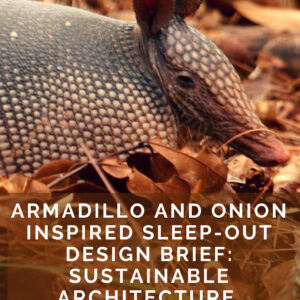$2.99
Summary:
In this report, the author addresses the ‘leaky homes’ issue from an architectural and health perspective. As an experienced Design and Visual Communication (DVC) teacher, the author looks at the water tightness of monolithic cladded walls (‘hollow’ walls). He extends his report and research to earth building practices (cob, straw bale, mudbricks, adobe, earth rammed, and more).
The report’s focus and context are New Zealand (NZ) homes. He refers to British Columbia, who has experienced the same leaky homes problem, in brief.
The report researches and investigates sustainable building materials/practice and the moisture content in dwellings. The aspects investigated will mainly be on the monolithic cladding of walls. The book addresses issues like how moisture influences physical health – particularly the mold and fungi in walls. He also looks in brief at the cladding of earth building walls and the waterproofing thereof.
As for social action (education – secondary school/high school student’s views) – an awareness campaign initiated by students targeting builders, council members, estate agents, architects, school students, parents, and the public is touched on. Perspectives and approaches used in this book are Education for Sustainability, Environmental Education, and Sustainable Architecture.
In this book, the author also shares information and images of the sustainable classroom (‘The Living Room’) created by a Primary Enviro-School in New Zealand in 2009. Photos of the completed classroom, with captions, are included. The sustainable classroom was planned, designed, and constructed as a collaborative school project. The students of the school were consulted and included in the process (student agency). Excellent sustainable practice is displayed in the selection of sustainable materials and the inclusion of sustainable features, and function. Aesthetics were cleverly merged within the sustainability framework to produce a beautiful building. The building materials were carefully selected to maximise the sustainable outcome of the classroom. A beautiful, functional, and very practical classroom indeed!
Teachers and students interested in Sustainable Architecture, Design and Visual Communication, Earth Buildings, and Sustainable Educational Spaces will find this book interesting and very useful.
APA referencing is included.
Keywords:
sustainable architecture, Design and Visual Communication, earth buildings, sustainable educational spaces, mold, fungi, monolithic cladding, earth building, cob, adobe, mud bricks, rammed earth, straw bale, social action, roof overhang, water tightness, waterproof, insulation, ventilation, disease physical health, building practice, building code, sustainable features, sustainable functions, aesthetics, choice of building materials, environmental education, education for the environment, education for sustainability
Contents
Report: Leaky Homes in New Zealand and the issues related to illness and disease caused by fungi growth (from an Environmental Education, Education for the Environment, and Sustainable Architecture perspective). Page 3
Summary: Page 6
- Introduction. Page 9
- What is a “leaky home” in New Zealand? Page 10
2.1 Monolithic cladding. 11
- The “Leaky homes” issue in New Zealand. 13
- Diseases from Mould or Fungi 14
- Sustainability, waterproofing, ventilation and, insulation of buildings to improve physical health. 16
5.1 The roof 17
5.2 The floors. 17
5.3 Floor Coverings. 17
5.4 Walls. 18
5.4.1 Exterior: Large roof overhang and watertight walls are crucial! 18
5.4.2 Interior: Gibb cladding is possibly the most common used cladding used in NZ. 18
5.4.2.1 Bulk insulation comes in a variety of formats – blankets, segments, rigid sheets or loose fill (see appendix A). 18
5.4.2.2 Reflective insulation works by letting through only a small percentage of the radiant heat it receives (e.g. the sun’s rays) and reflecting the rest using a shiny surface. 19
5.5 Widows. 20
5.6 Doors. 20
5.7 Ceilings. 21
5.8 Heat, air conditioning systems, and ventilation systems. 21
5.8.1 Heat pumps. 21
5.8.2 Heat Recycling Ventilation (HRV) 22
- Good earth building practice in NZ (to increase waterproofing and moisture control). 22
6.1 Mudbrick, cob, and earth building guidelines for wet and humid climates (such as NZ’s) 22
6.2 Straw bale building guidelines for wet and humid climates (such as NZ’s) 26
- “The living room” classroom: Hukanui Primary School in Hamilton, NZ—an example. 28
7.1 Walls & ceilings: 29
7.2 Floors: The students collected hundreds of wine bottles with lids. 29
- Summary: 34
8.1 Reflection on my learning through each of the stages of knowledge development, experience and action taken: 34
8.2 Reflection on Knowledge development: 34
8.3 Reflection on experience: 35
8.4 Reflection on Action Taking: 36
8.5 Action of my students – and myself – for the environment (EFS) 36
REFERENCES: 38
Personal interview and visiting the site: Hukanui Primary School (NZ). 41
APA REFERENCING AND CITATION: 43
APPENDICES. 44
APPENDIX A: Types of insulation. 44
APPENDIX B: New Zealand’s earth building standards. 45
*See NZ Earth Building standards: http://www.earthbuilding.org.nz/oldsite/standards.php. 45
APPENDIX C: How do we identify MONOLITHIC CLADDINGS?. 47
APPENDIX D: Primary Weather Protection for straw bale building (North, 2002). 48
Description
Book details:
5300 words. 50 pages, including APA Referencing (Size A4, font size 12 P). Illustrative images are included with relevant links.
2. Introduction
This report is about the issues of excess damp in buildings (water vapour) and its relationship with illness and diseases caused by mould and fungi growth in New Zealand homes. I will look at the health issues which water vapour causes on the interior of dwellings (“Leaky homes”). The focus will then move briefly to the waterproofing of earth buildings and natural, sustainable building materials. The newly completed “Living Room” (sustainable classroom) from Hukanui Primary School in Hamilton (New Zealand) will be used as an example of good building practice and a good choice of sustainable building materials. In the report, I will also touch very briefly on the building code for earth buildings in NZ, regarding waterproofing and moisture content in the walls. Environmental action will be taken to make builders, council staff, architects, schools and the community in general aware of the health dangers of mould and fungi. With this action, I will also endeavour to make them aware of making good choices regarding quality sustainable building materials. Additionally, I will encourage economic, political and social considerations regarding the “leaky home” issue and the solution to it.
2. What is a “leaky home” in New Zealand?
Leaky homes are houses that, due to poor design or incorrect installation of building materials, allow water to penetrate the building (Consumer build bulletin, 2010). The water is soaked up by the framing and due to the lack of a cavity system; there is no air flow to dry the timber out. This, in turn, allows mould and fungi to grow on the timber which then rots. Houses that leak is most commonly built from the early 90‘s to 2005. They are usually houses built using monolithic cladding systems and designs that include parapets, no eaves and cantilevered decks (Wilson et al., 2007).
2.1. Monolithic cladding
The monolithic cladding is made of sheets that are coated to give the seamless appearance of concrete, masonry or plaster. See picture below.
Types of Monolithic cladding EIFS sheets (Exterior Insulation and Finish Systems) are made up of polystyrene boards with a plaster and paint finish (Consumer build bulletin, 2010). This type of cladding has been popular in New Zealand since the 1980s. See Appendix C for more details.







